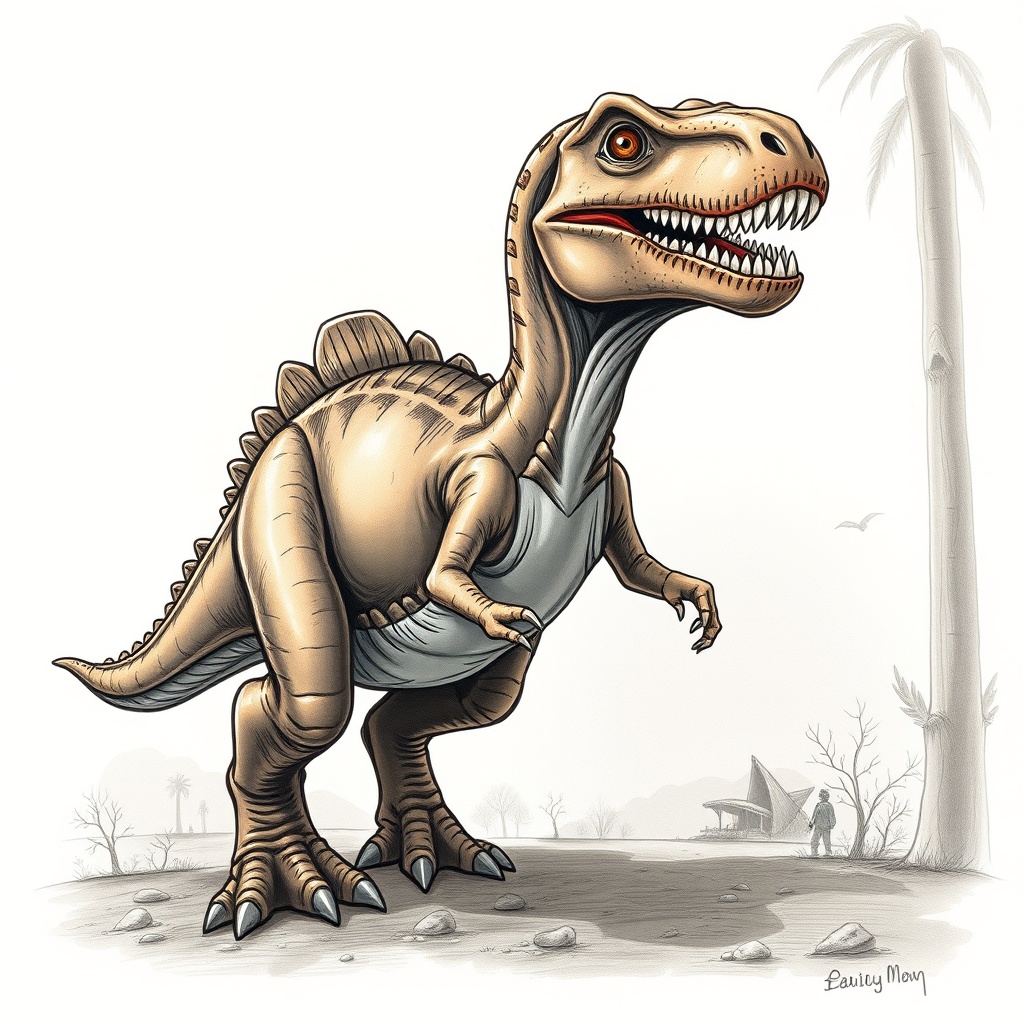** Dinosaurs fabulous journey**
Dinosaurs roamed the Earth during the Mesozoic Era, which is divided into three periods: the Triassic, Jurassic, and Cretaceous periods. Each of these periods saw the evolution of different species of dinosaurs, showcasing a vast array of shapes and sizes. For instance, the small and agile Velociraptor thrived alongside the colossal Brachiosaurus, which could reach heights of up to 40 feet.
The discovery of dinosaur fossils has provided scientists with incredible insights into their biology and behavior. Paleontologists study these fossils to understand how dinosaurs lived, what they ate, and how they interacted with their environment. For example, fossilized remains of the Tyrannosaurus rex reveal its powerful jaw structure, indicating it was an apex predator, while the herbivorous Stegosaurus had distinctive plates along its back, possibly used for display or thermoregulation.
Recent developments in technology, such as CT scanning and 3D modeling, have allowed researchers to examine dinosaur fossils in unprecedented detail. These methods have revealed information about the growth patterns, locomotion, and even potential colors of these magnificent creatures. For instance, studies suggest that some dinosaurs may have had feathers, challenging our previous notions of their appearance and behavior.
The cultural impact of dinosaurs extends beyond movies like Jurassic Park. Dinosaurs have become a source of fascination for many, leading to numerous documentaries, books, and educational programs aimed at children and adults alike. Museums worldwide showcase dinosaur skeletons, allowing visitors to connect with this ancient past and inspire future generations of scientists and paleontologists.
The dinosaur is an extinguished species from prehistoric times.
Old bones and fossils revealed their existence.
Examples of well-known dinosaurs include the Velociraptor, known for its speed and agility; the Triceratops, recognizable by its three facial horns; and the imposing Spinosaurus, which is believed to have been semi-aquatic. Studying these species helps us understand the diversity of life that once thrived on Earth and how different adaptations contributed to their success in various environments.
Dinosaurs can be classified into two main groups: Saurischia, which includes theropods and sauropodomorphs, and Ornithischia, which comprises various herbivorous dinosaurs. Theropods are particularly significant as they are the ancestors of modern birds. The discovery of feathered theropods has reshaped our understanding of the evolutionary link between dinosaurs and birds, providing compelling evidence for the theory of evolution.
Dinosaur Species Overview
In addition, educational workshops and field trips organized by museums provide hands-on experiences, allowing participants to excavate ‘fossils‘ and learn how paleontologists work. These activities not only make learning about dinosaurs fun but also foster a deeper appreciation for the sciences.
To understand the world of dinosaurs, several resources are available for readers. Books like “The Dinosaur Artist” by Paige Williams and “The Rise and Fall of the Dinosaurs” by Steve Brusatte explore various aspects of dinosaur life and extinction. Online platforms offer documentaries and virtual tours of paleontological sites, enriching our understanding of these fascinating creatures.

Many studies are still going on about the “exact” timing of their existence
The movie from SPIELBERG brought them to life again in Jurassic Park.
Shop Tips
Thank you for shares and comments! 😀🎉
image Picsart and MIB
Lulu | Content | Glossary | All References









![Dinosaurs fabulous journey 11 Jurassic Park - 4K Ultra HD + Blu-ray + Digital [4K UHD]](https://m.media-amazon.com/images/I/41eKa4iIonL.jpg)
